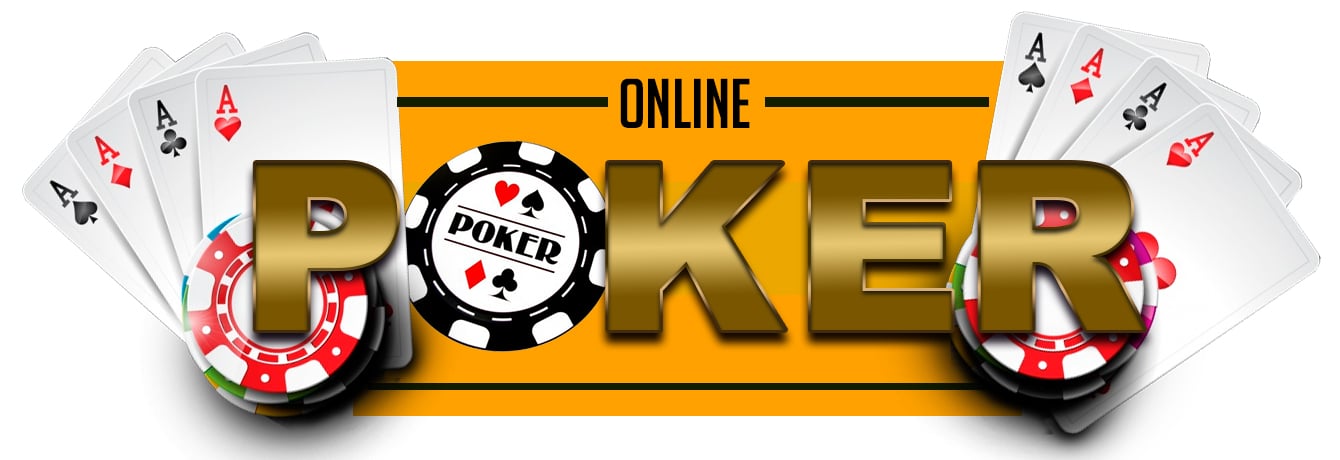No matter what your general style of play is, throwing the occasional bluff is necessary to keep your opponents guessing. It is an integral part of poker.
The same goes for your opponents. While you will occasionally come across straight players who only bet when they have the goods, the vast majority are capable of bluffing at least occasionally.
Your job is to catch these bluffs and catch them with your hand in the jar – but you have to learn how to detect them.
So if you’re facing a bet and aren’t sure what to do with it, these tips should give you a good starting point.
1. Flop continuation bet
If you’ve been playing poker for any length of time, you’re probably familiar with the continuation bet.
This is a play in which a player decides to bet on the flop after raising preflop, and many of your opponents will do so whether they connect with the board or not.
While c-bets work very well and are a powerful weapon in your arsenal, you can’t just bet every flop without thinking. This may work against very weak players who play fit-or-fold poker, but it won’t work against thinking opponents.
They will consider your preflop range and how that range corresponds to the flop structure. When you are trying to catch a c-bet bluff, you should do the same.
Some players will use this move too often and you can easily take advantage of this.
For example, if someone raises before the flop from early position, and there are low and medium cards on the table, it is more likely that his flop bet is a bluff.
Board texture is much more likely to help other players, especially if the blinds are still in play.
Always be wary of players who make continuation bets too often. This is definitely one of the more popular poker bluffs, and many players don’t know how to balance it properly.
Once you’ve figured out that someone is automatically betting on almost every flop, you can counter this by checking their bets in position or mixing in the occasional check-raise to force them to give up any equity they might have had after putting more money into the pot.
2. Raise from the button

Even bad players know that you should raise with all sorts of hands from the button to try to steal the blinds, which is why this is one of the most common poker bluffs.
Of course, it’s hard to talk about a complete bluff when discussing a preflop situation, but if you raise with a hand you shouldn’t, you’re basically bluffing.
So if you spot a player who opens with two cards, you can add more hands to your 3-betting range and check-raise your average strength from the big blind.
If your opponent plays too wide in this spot, it will be very hard for him to defend against your 3-bet.
In addition, if you construct your call range properly and have many decent hands against their wide and weak range, you will have many opportunities to take the pot.
So even though the button player has a huge positional advantage, if you notice him playing too aggressively, you can easily punish him for it.
3. Bluffing to see where they stand
Although you won’t find this type of bluff with competent pros, recreational players seem to like this move a lot.
This type of bluff is usually marked by a fairly small size.
As a poker bluff, it is not very good because it does not value other players and reopens the action for anyone who may have a strong hand and has decided to play sneaky.
This game is usually not difficult to catch because the player who makes it is often quite honest.
The whole purpose of the bluff is to buy the pot in case everyone else has completely folded and is content to surrender, or at least see the next card with the hope of improving very cheaply.
So while you won’t see this move from experienced players, you’ll often encounter such bets even in multiway pots from someone new to the game, so you shouldn’t be afraid to play.
4. Instant-Bet Bluff
When you check to your opponent and he immediately makes a rather large bet, you may be dealing with an instant-bet bluff.
This is a common bluff in poker, especially among live players, and its purpose is to confuse your opponent and not give him time to think.
Of course, you can have as much time as you want, because the speed at which they bet doesn’t dictate your actions – but this game sometimes works.
Instant-bet bluffs can be very effective against inexperienced players who will feel compelled to make a quick decision. They may react by automatically folding their cards without taking adequate time to think about their hand.
So when you are faced with such a bet on the part of your opponent, always try to break down your entire hand to see if they have a very strong hand.
Most of the time, they are just trying to look intimidated, so you can pick a few extra pots on that basis.

5. Donk-Bet Bluff
Most of the time in poker, you’ll want to check the action of the original raiser and let them continue their aggression.
There’s not much advantage to betting on them on the flop to let them know you have a good hand and let them get away cheaply. This is why this game has been called donk-bet.
While good players use donk-bet as part of their overall strategy, you won’t see it very often because it’s much harder to balance and incorporate into an overall solid strategy.
Bad or inexperienced players, on the other hand, will often use donk-bet. And most often it is a bluff.
The logic behind this move is to try to win the pot right away, instead of having to deal with the continuation of the bet and everything that follows.
You may notice that some players just don’t want to give up the donk-bet bluff, even after repeatedly finding themselves in a difficult situation because of it.
With the original raiser having a position and range advantage, in most cases, they can choose to play how they want – check or raise with hands that have good equity and let the bluffer throw away some more money on the turn if they want.
So when you notice a recreational player betting a donk on the flop, don’t rush to fold.
6. Turn Stab
As we mentioned earlier, firing a continuation bet on the flop is quite common.
So, when a player who should bet on the flop decides to check, it opens the door for another popular poker bluff, turn stab.
This is another one of those bluffs that will work quite often, especially against weaker players.
Good players know how to balance their check-back range by checking some strong hands. However, recreational players usually have absolute air or nuts in these spots.
Since it’s really hard to have nuts on the flop, turn stab bluffs work quite well.
Even if a player in position checks the turn, depending on how the board turns out, you can get rid of the hand with a river bet.
So, if you don’t have this in your arsenal, you should start looking for good spots to add this play and always be ready to bluff against other players.
7. Min-Bet Bluff
Again, this is one of those bluffs that you will probably encounter often, but only in less experienced players.
It usually happens on the river, where these players try to buy the pot with a small bet.
Although it’s a fun-looking bluff, it can be quite tricky, especially if you don’t have a hand with real showdown value.
The problem with this bluff is that you have to be pretty sure that it is actually a bluff.
If that’s the case, you can raise and win the pot. However, if it turns out to be a small value bet, you’ll be in big trouble when they call on you.
The reason professionals don’t resort to this bluff so often is that a good player will simply check with a wide range of hands because he knows he’s getting the right price.
So if you find yourself in this situation and see that your opponent’s story doesn’t make sense, you should make a fairly wide call and even consider a raise if you have full air.
8. Bluff “Squeeze

If there is one thing that has really changed in poker over the years, it is that the games have become much more aggressive.
Long gone are the days when most people sat at the table and waited for nuts.
Nowadays, players look for good opportunities and worry less about the quality of their cards.
The squeeze bluff has become quite popular, so much so that even inexperienced players often use it.
When there’s a raise and several callers in front of you, there’s a lot of dead money in the pot and only one player (the original raiser) can really worry.
So, why not raise and try to squeeze everyone to win those sweet chips in the middle?
Again, this is a preflop play, so it may be hard to classify it as a pure bluff, but when you do this with a weak hand, you don’t expect to have the best cards if any action occurs.
The purpose of this bluff is to put everyone else on the line and force them to fold hands that are probably ahead of you, or maybe even dominate you.
In most cases, this move works great because people tend to over-fold in these situations, so you can certainly take advantage of this.
Don’t be afraid when someone else squeezes and don’t give up too easily. Unless you are at a table full of really inexperienced players, you will see this play quite often.
9. Triple-Barrel Bluff
Although not as common as the other bluffs on this list, the triple-barrel bluff is usually very effective and difficult to beat.
When a player is determined to win the pot and his cards appear on the flop, turn and river, checking them without a very strong hand is a difficult task.
It’s a good thing that most players don’t have it in them to bluff often, because that would make the game much more difficult.
The only way to deconstruct these bluffs is to approach the hand in a very methodical and calm manner.
Start by thinking about their likely range preflop and proceed from there. By betting all three streets, they represent a very strong hand.
How likely is it that they have a strong hand, given the preflop and card structure?
Of course, any physical clues you may have caught along the way and any prior knowledge of a player’s tendencies can be very useful.
It’s better to be confident in someone’s ability to make the bluff before you decide to check it.
10. Overbet Bluff
It is logical to end this list of the best poker bluffs with the one that is probably the most difficult to deal with.
The overbet bluff is most often used on the river, when your opponent decides to make a really big bet – usually far exceeding the size of the pot.
This type of bluff is not as rare as you might think. Loose players, even very good ones, love to use it to put maximum pressure on their opponents.
Of course, they balance this by polarizing their ranges and also sometimes make huge bets when they have virtual nuts.
What makes this bluff so difficult to master is that you get very bad odds to check.
So, you have to be sure that you are bluffed to check, and this is not easy when you have an average hand and are facing a huge bet.
As a general rule of thumb, you shouldn’t check too many of these bets.
Save your hero call for when you are up against a total maniac or a really good player who believes he can make this kind of play with air.
Remember, this type of bettor will never have an average hand. They will have nuts or nothing, so the strength of your hand is not as important as you might think.
Bluffs everywhere
If you play poker, you will deal with bluffs on a daily basis, and hopefully this article will help you recognize and deal with the most common spots.
There is so much to say about bluffs in poker that it is impossible to explain it in one article, but you have to start somewhere.
At the same time, remember that your opponents may also have access to this knowledge. If you’re preparing to launch yourself into the air, think about these typical situations.
If your play sounds “bluff,” you might be better off limiting your losses and saving your chips for another, more favorable moment.




